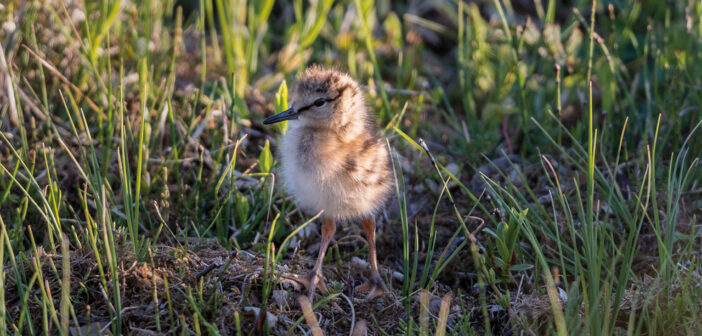Those looking at how to make a success of sustainable farming should take a trip to the Bisterne Estate, bordering the New Forest National Park in Hampshire.
Under the stewardship of head of conservation Rupert Brewer, the estate has won several awards and hosts numerous tours.
He is extremely proud of the estate’s contribution to supporting nature, but also of what it is doing for farming operations.
The estate is involved in 13 conservation projects, with the latest to bear fruit being a redshank recovery project. Redshank numbers have declined drastically, with the British Trust for Ornithology estimating the breeding population is down to 22,000 pairs, a 45% decline in less than 30 years.
The project started as a LIFE lapwing recovery scheme, but it benefited the redshank too. The estate is part of the Lower Avon Valley Farmer Cluster, comprising 16 farmers and other landowners. The partnership with the Game & Wildlife Conservation Trust manages 5,819ha stretching across Hampshire, Dorset and Wiltshire.

The redshank recovery project has proven to be beneficial to livestock too © Bisterne Estate
Fledging success
This season, 11 pairs were monitored, with nine pairs fledging chicks. “There were just two known breeding territories throughout the whole of the New Forest National Park area. It’s an absolute joy to have them here and they bring a lot of pleasure to me and those who visit the estate.”
Creating the ideal habitat wasn’t overly demanding, and included clearing and reprofiling ditches, creating muddy scrapes from low-lying areas and providing nesting cover in close to 200ha of meadow.
This has also helped the farm. “We have better grazing land, improving the liveweight of our heifers. Some of our land is sand over gravel, so the grass burned off pretty quickly last spring. But we were able to use the conservation area as feed for all our livestock to mitigate the effects of the extreme weather. We asked ourselves why we didn’t manage this area like this in the first place.”
Alongside the wetland, dry and wet heaths, watercourses and forestry have all been improved to support a range of species, from smooth snakes to barn owls.
The estate also takes advantage of various Countryside Stewardship and Sustainable Farming Incentive (SFI) actions to boost biodiversity further with flower strips and beetle banks, although some have been funded by the estate itself.
It now views every part of its operations differently. “By combining the habitats on the estate with flower strips, regaping and planting hedgerows and creating beetle banks, we have boosted populations of pollinators, predatory insects and birds. I can’t put a figure on it, but I’m confident it is helping farm performance.”
BNG evaluation
However, biodiversity net gain options mean the estate is reviewing its figures. With so many different habitats, including over 350ha of mixed woodland, the management team is evaluating opportunities.
“It’s on our radar and definitely part of our future. We haven’t come to any conclusions on how we monetise this, as there are several options open to us and all need thorough evaluation.”
Regardless of what options are taken up, Rupert will continue to open the farm up to the public, students and other interested parties. “Our aim is to help change people’s perceptions of farming.
“Visitors not only see the technology that is now modern farming, but also the array of wildlife the estate is home to. They see another side to farming and go away with a different mindset.”
Bank maps nature opportunity
Lloyds Bank has published its Farming with Nature: Mapping the Growth Opportunity for UK Agriculture report, claiming it is the most comprehensive analysis of its kind.
With the help of geospatial intelligence business Earth Blox, the bank has mapped 5.1m hectares – almost one-third of the UK’s farmed land – using geospatial data, on-farm assessments and new economic insight.
The report also marks the introduction of Lloyds’ Agricultural Transition Finance, designed to support farmers moving to more sustainable and regenerative systems.
The report identifies 1.2m hectares of UK farmland with the highest potential for habitat creation that can act as carbon stores and boost beneficial species. It has also identified 600,000ha for tree and hedge planting, to help farms reduce flood risk and soil erosion while also improving water retention and biodiversity.
With drought now 70 times more likely due to climate change, the bank’s analysis shows 700,000ha in drought-prone regions that could benefit from improved water management.
East Anglia a priority
This is particularly relevant for East Anglia, the region the bank identifies as having most to gain from habitat creation and biodiversity gains. Climate change projections show this area and the South and East as carrying the greatest risk of drought and heat.
East Anglia makes up 14% of the total farm area assessed and is a clear priority given its high concentration of arable farms. Agriculture here shows trends of high fertiliser and pesticide use, low soil organic carbon and the worst national soil pH.
Cover cropping could deliver the greatest benefits to farm productivity as well as reducing pressures on protected areas, while tree and hedge planting (identified across 2% of the total farm area) could help address low carbon sequestration and water scarcity, and reduce flood risks.
Water concerns
East Anglia also records the lowest water availability and highest arable water use intensity (7% of total farm area), making water management, reservoir building and rainwater harvesting highly relevant for easing demand on mains and groundwater.
Lee Reeves, UK head of agriculture at the bank, says: “Every farm is unique and there is no one-size-fits-all solution. We know farmers are best placed to decide how to manage their businesses, but key industry partners need to support them.
“Our new agricultural transition finance loan is designed to help ease cashflow pressures while supporting long-term resilience and positive outcomes for nature and the environment. It’s all part of our commitment to support farmers with data-driven insight, practical advice and a range of financing options that can help them succeed with more sustainable farming systems.”




